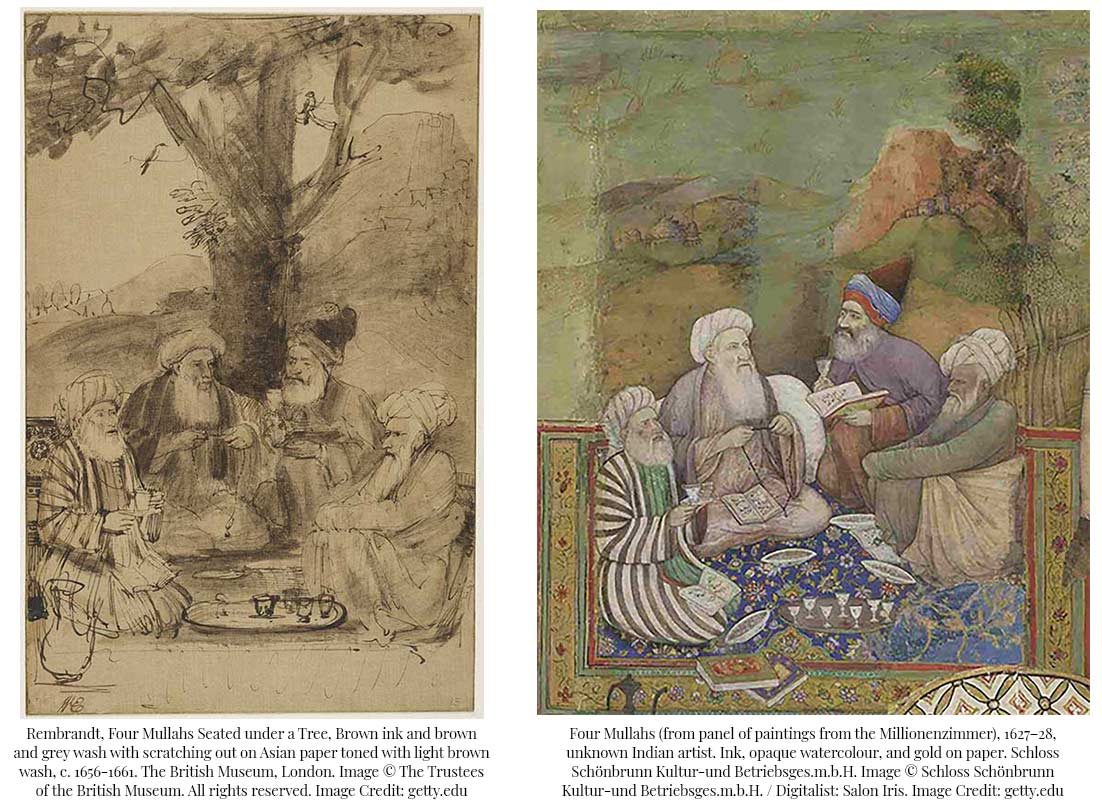Retracing an Old Relation: Rembrandt’s Mughal Paintings
Digging through the one artistic tradition that does not get the recognition it deserves in any study of Rembrandt’s repertoire: his Mughal paintings!
Jagriti Sharma
In the sixteenth and seventeenth century, India’s foreign policies were fruitful enough that they facilitated a free and artistic exchange of thoughts, ideas and styles with the rest of the world. The Mughal emperors of the time, who ruled over the better part of the country, Jahangir and his son, Shah Jahan, indulged in European art, and pursued a tradition of a pluralistic court. On the other side of the world, in what was then known as the Dutch Republic, Rembrandt Harmenszoon van Rijn, the celebrated draughtsman, painter, and printmaker, who had never travelled to India in his life, found inspiration in works that travelled to his hometown with the Dutch East India Company.

Rembrandt and the Baroque style have grown to be synonymous, with him being the pioneer of the Dutch art culture. Scenes from the countryside, the Bible, or individuals from different walks of life – we’ve had the pleasure of watching them be brought to life in his canvases. But one artistic tradition that does not get the recognition it deserves in any study of Rembrandt’s repertoire is that of the Mughal paintings.

Breaking away from his well-known medium of painting, Rembrandt explored the Mughal imagery through drawings and sketches. These creations were extensively detailed, where his familiarity with Indian products like silk, cotton, boxes, jewels, along with the symbols of Indian art, were astonishingly apparent. Some were copies of original Mughal paintings, while others were from his own imagination. But all of them were devoid of the European influences prevalent in Orientalist paintings of the time. Instead, they incorporated his Baroque knowledge of light and shadow, that induced a vision of movement that was otherwise absent in traditional Mughal paintings.

The most obvious difference, and a mark of accolade, is the absence of colour in Rembrandt’s Mughal recreations. He paid a lot more attention to the line work and how he perceived the form and the figure of the Mughal subjects, and used his knowledge of portraits to capture the technique and the material of the Indian painting style. Rembrandt was more interested in understanding what the Indian style brought to the table and what he could learn from it. Drawing on Asian paper, he remained loyal to portraits of the rulers, courtiers and other Mughal men. His line work and curiosity embellished the drawings with an accurate representation of the farr-i izadi or the Divine light. They revelled in his interest in Mughal clothes and jewellery, where he carefully studied the lines of tassels, jamas (coats), the leather folds of the shoes, and the translucent skirt and detailed sashes.

The comparison between Rembrandt’s drawings and the Mughal paintings simply highlights the vastness of the relations previous civilisations maintained along with economic trades. Despite the length and uncertainties of travel between the Netherlands and India, inspiration, and a thirst for new art forms and novel audiences found its way to curious minds. Rembrandt’s mastery is gloriously discernible in his drawings that have survived. In many ways, they stand as testaments to the barriers art can actually cross.
Share
